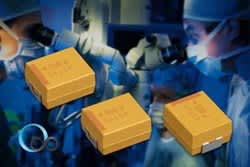Sputtering is a physical vapor deposition (PVD) method of depositing the evaporated target material onto the surface of the substrate forming a thin film layer.
Sputtering is the preferred vacuum deposition technique used by manufacturers of semiconductors, CDs, disk drives, and optical devices. It is used extensively in the semiconductor industry to deposit thin films of various materials in integrated circuit processing. Thin anti-reflection coatings on glass for optical applications are also deposited by sputtering. Sputtered films exhibit excellent uniformity, density, purity and adhesion.
Several types of sputtering processes exist, including: ion beam, diode, and magnetron sputtering.

In the sputtering process substrates are placed into the vacuum chamber, and are pumped down to their process pressure. Sputtering starts when a negative charge is applied to the target material (material to be deposited), causing a plasma or glow discharge. Positive charged gas ions generated in the plasma region are attracted to the negative biased target plate at a very high speed. This collision creates a momentum transfer and ejects atomic size particles from the target. These particles traverse the chamber and are deposited as a thin film onto the surface of the substrates.

The tungsten, molybdenum, titanium targets offered by Stanford Advanced Materials have the advantages of high density, high purity, high precision, homogeneous structure etc.
For more information, please visit http://www.samaterials.com/
Sputtering is the preferred vacuum deposition technique used by manufacturers of semiconductors, CDs, disk drives, and optical devices. It is used extensively in the semiconductor industry to deposit thin films of various materials in integrated circuit processing. Thin anti-reflection coatings on glass for optical applications are also deposited by sputtering. Sputtered films exhibit excellent uniformity, density, purity and adhesion.
Several types of sputtering processes exist, including: ion beam, diode, and magnetron sputtering.

In the sputtering process substrates are placed into the vacuum chamber, and are pumped down to their process pressure. Sputtering starts when a negative charge is applied to the target material (material to be deposited), causing a plasma or glow discharge. Positive charged gas ions generated in the plasma region are attracted to the negative biased target plate at a very high speed. This collision creates a momentum transfer and ejects atomic size particles from the target. These particles traverse the chamber and are deposited as a thin film onto the surface of the substrates.

The tungsten, molybdenum, titanium targets offered by Stanford Advanced Materials have the advantages of high density, high purity, high precision, homogeneous structure etc.
For more information, please visit http://www.samaterials.com/













